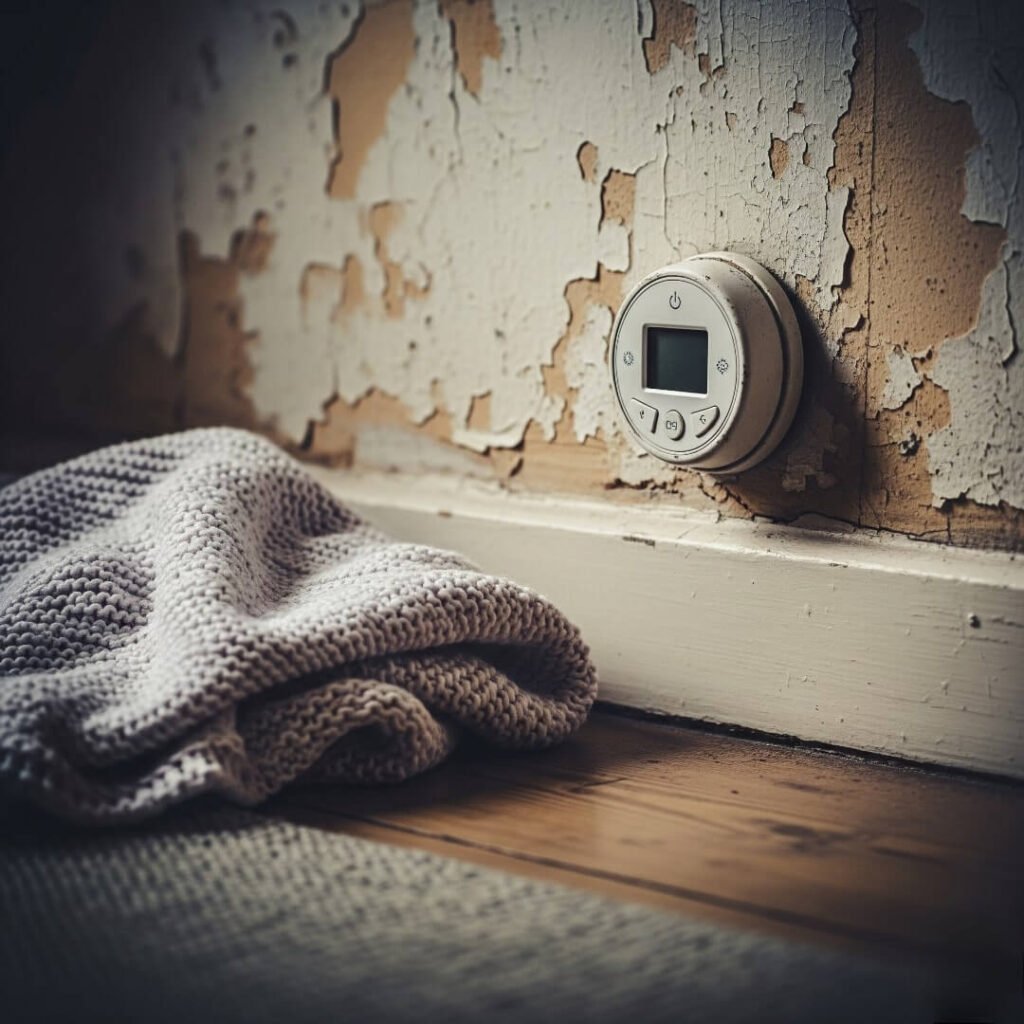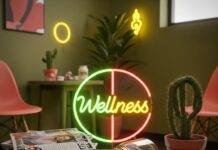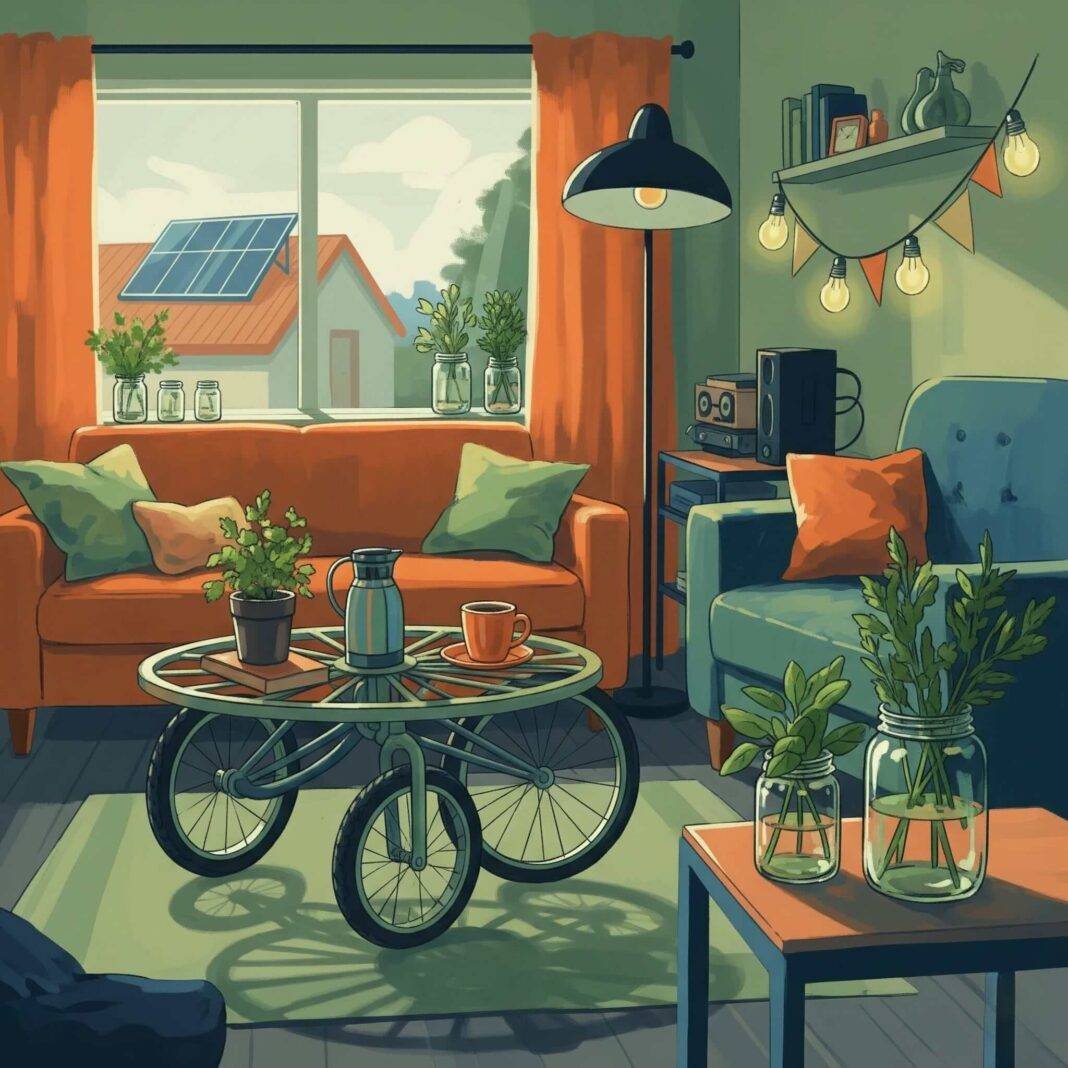My Top 5 Sustainable Home Trends for 2025
1. Solar Panels: My New Obsession (Even If I’m Clueless)
Solar panels are the MVPs of sustainable home trends, and I’m, like, low-key in love. I’m stuck in a renter’s hellhole, so no rooftop panels for me, but I snagged a portable solar charger from Energy.gov’s solar guide. It’s been a game-changer for my phone and laptop—when I remember how to use it. Last month, I was at a Logan Square café, bragging about my “solar-powered life,” and my buddy pointed out I’d plugged it into the wall. Mortifying? Totally. But when it works, it’s shaving dollars off my electric bill, and I feel like I’m punking the utility companies. If you own a place, check EnergySage for panel quotes—my cousin swears she cut her bill by 30%.

- Why It Saves Money: Slashes electricity costs, especially with 2025’s new tax credits.
- My Tip: Renters, start with portable panels—they’re cheap and forgiving.
2. Upcycling Furniture: My DIY Disaster
Upcycling’s a huge sustainable home trend, and I’m all in—mostly ‘cause I’m broke and IKEA’s not my vibe anymore. I found this beat-up wooden crate at a Pilsen flea market and thought, “Boom, I’m making a shelf!” Spoiler: it’s wobbly, I smashed my thumb with a hammer, and it looks like it might collapse. Still, it holds my books and has more personality than my landlord’s beige walls. Instructables has tutorials that make upcycling less scary, even for DIY disasters like me. That crate cost me $5, and I’m calling it eco-chic.

- Why It Saves Money: Skip pricey furniture; reuse old stuff for cheap.
- My Mistake: Sand the wood—splinters are not a personality trait.
3. Smart Thermostats: Smarter Than Me, TBH
Smart thermostats are a Sustainable Home Trends I didn’t know I needed till I got one on a Black Friday deal. It learns my schedule (or tries to, since I’m a chaotic gremlin) and cuts my heating bill by, like, 20%. One time, I cranked it to 80°F thinking it’d warm my place faster—newsflash: I just sweated through my favorite hoodie. Check out Nest or Ecobee—they’re worth the upfront cost. My apartment still smells like burnt toast half the time, but at least it’s energy-efficient.

- Why It Saves Money: Cuts energy use by auto-adjusting temps.
- My Tip: Don’t mess with the settings—just let it do its thing.
4. Indoor Herb Gardens: I’m Basically a Farmer Now
Indoor herb gardens are a sustainable home trend that’s got me feeling like a fancy homesteader, even if my basil looks like it’s begging for mercy. I grabbed some mason jars from a thrift store and started growing herbs on my windowsill. It’s cheaper than buying overpriced grocery store herbs, and it’s eco-friendly—win-win. I once forgot to water them for two weeks and cried when my cilantro wilted. The Spruce has great tips for not killing your plants. My kitchen smells like herbs now, not just burnt toast.

- Why It Saves Money: Grow your own herbs; skip the store.
- My Mistake: Water them regularly—plants aren’t as forgiving as I thought.
5. Rainwater Harvesting: My Wet and Wild Adventure
Rainwater harvesting is a sustainable home trend I’m dipping my toes into—literally. I got a cheap rain barrel from a local hardware store and set it up on my balcony. It’s great for watering my sad plants, but I didn’t secure it properly, and it tipped over during a storm, soaking my neighbor’s laundry. Oops. Still, it’s saving me water bills, and I feel like a survivalist. EPA’s guide has solid advice for doing it right.
- Why It Saves Money: Free water for plants or cleaning.
- My Tip: Secure the barrel—your neighbors will thank you.
































